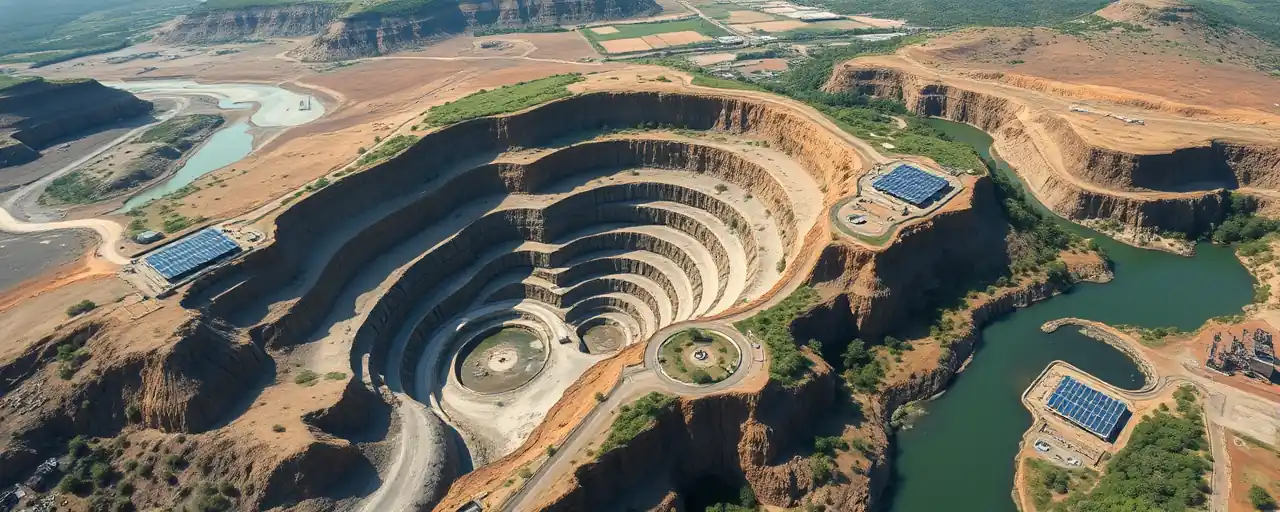A New Era for American Mining
The United States is doubling down on its quest for mineral independence. A recent announcement from the Federal Permitting Improvement Steering Council unveiled plans to make the permitting process for critical mineral projects more transparent and efficient. This move, driven by an executive order signed in March 2025, aims to ramp up domestic production of minerals like copper, lithium, and potash, which are vital for everything from electric vehicle batteries to agricultural fertilizers.
The initiative responds to growing concerns about the nation’s reliance on foreign minerals. In 2024, the U.S. imported 100% of 15 critical minerals and over 50% of 46 others, leaving supply chains vulnerable to global disruptions. By prioritizing homegrown production, the government hopes to create jobs, strengthen the economy, and secure a stable supply of resources. But the push comes with questions about environmental costs and community impacts, which have sparked debate among stakeholders.
Transparency Takes Center Stage
At the heart of the initiative is the Federal Permitting Dashboard, a tool designed to bring clarity to the often murky world of project approvals. The dashboard now tracks a slate of high-profile mineral projects, including the Resolution Copper Project in Arizona and the Silver Peak Lithium Mine in Nevada. By making project timelines and review statuses public, the dashboard aims to hold federal agencies accountable and give communities a clearer view of what’s happening in their backyards.
Manisha Patel, acting executive director of the Permitting Council, called the dashboard a game-changer for coordinating reviews across agencies. Data backs this up: in 2024, projects tracked under the dashboard’s FAST-41 program completed environmental reviews 23% faster than those outside it. Yet, some analysts point out that the dashboard’s timelines often stop at initial approvals, leaving gaps in tracking the full journey to construction and operation.
Economic Promises and Challenges
The economic case for boosting domestic mining is hard to ignore. Last year, U.S. mines produced nonfuel minerals worth $106 billion, fueling industries that added $4.08 trillion to the economy. Mining supports over 1.5 million jobs, from heavy equipment operators to engineers, and every dollar spent in the sector ripples out to generate nearly three more in related industries. Regions rich in minerals, like the Southwest, stand to gain from new projects that could revitalize local economies.
Still, the path isn’t without hurdles. Expanding mining requires significant investment in technology and infrastructure, and the executive order relies on Congress to unlock new funding. Some industry experts also warn that rushing approvals could lead to oversights, potentially undermining long-term economic gains if projects falter due to legal or environmental challenges.
Environmental Stakes in Focus
Mining’s environmental footprint is a major point of contention. Extracting critical minerals can scar landscapes, pollute water sources with toxic runoff, and emit greenhouse gases during processing. A recent incident in Zambia, where an acid spill from a mine damaged local ecosystems, serves as a stark reminder of what’s at stake. In the U.S., environmental impact assessments are required under federal law, but critics argue that rushed permitting could weaken these safeguards.
On the flip side, supporters of the initiative highlight that domestic mining could reduce emissions tied to importing minerals from overseas. Some companies are also adopting greener practices, like powering mines with solar energy or using electric vehicle fleets. Balancing these trade-offs will require rigorous assessments and clear regulations to ensure mining doesn’t come at the expense of the environment or public health.
Voices From the Ground
Local communities and Indigenous groups are demanding a seat at the table. Mining projects often overlap with ancestral lands or areas critical to local economies, raising concerns about displacement and pollution. Engaging these stakeholders early is key to avoiding conflicts, as seen in successful partnerships like Rio Tinto’s agreements with Indigenous communities in Australia. Formal agreements that guarantee benefits, like jobs or infrastructure, can build trust and ensure projects deliver for those closest to the ground.
Investors are also weighing in, pushing for stronger environmental and social standards. Many now prioritize companies that meet strict governance criteria, seeing them as less risky in the long run. Digital tools, like online platforms for tracking stakeholder feedback, are helping bridge gaps between companies, communities, and regulators, but the process demands time and commitment.
Looking Ahead
The push for domestic mineral production marks a pivotal moment for the U.S. economy and its place in the global supply chain. By streamlining permitting and boosting transparency, the government is laying the groundwork for a mining boom that could reshape industries and communities. But success hinges on navigating the delicate balance between speed, sustainability, and stakeholder trust.
As more projects join the Federal Permitting Dashboard in the coming weeks, the nation will get a clearer picture of whether this bold vision delivers on its promises. For now, the focus remains on ensuring that the rush for resources doesn’t leave lasting scars on the land or the people who call it home.
